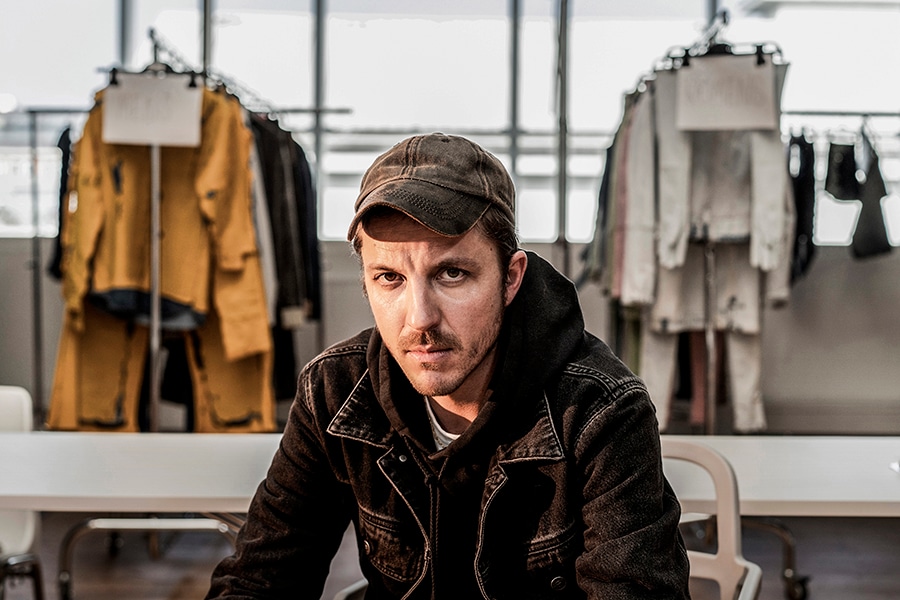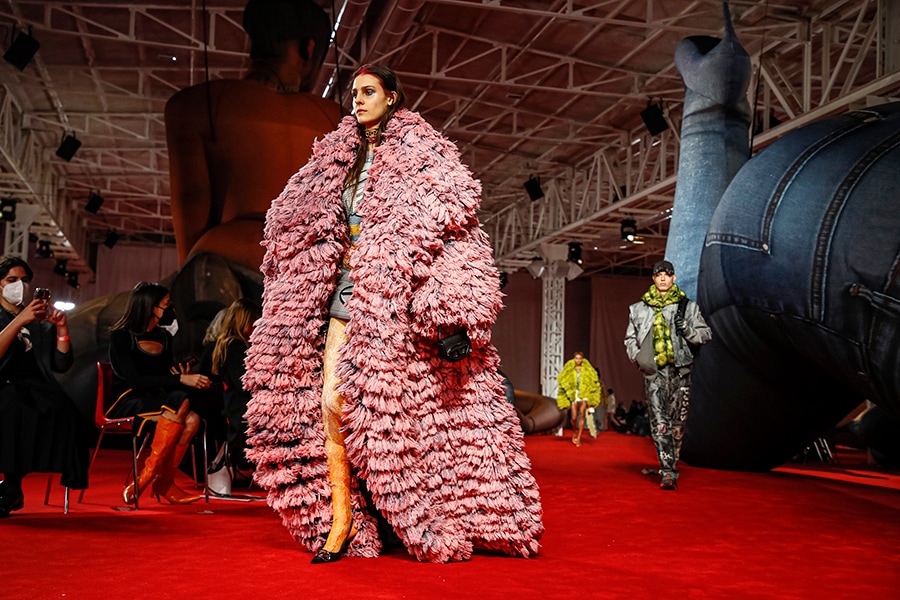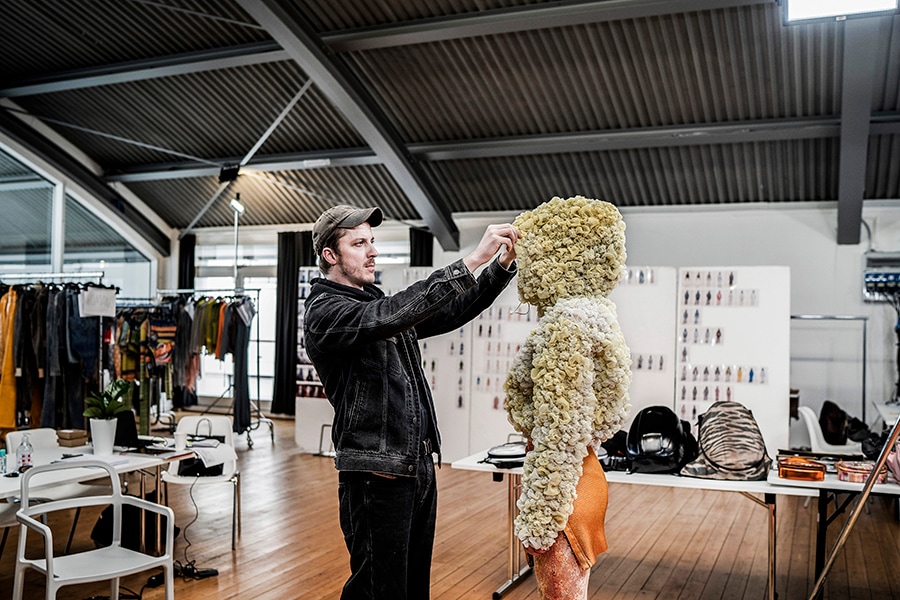
Is Diesel—the rock 'n' roll jeans brand—the first great designer of 2022?
Now designed by Glenn Martens, Diesel came to Milan with its 1,000 forms of denim: tufted, frayed, collaged, chromed, recycled, reinvented. He is not the first designer to try his hands at multiple brands simultaneously but may be the first to embrace such seemingly disparate houses to equal acclaim
 Glenn Martens in the Diesel studio in Milan, Italy, Feb. 18, 2022. The onetime rock ’n’ roll jeans brand is now designed by Martens.
Glenn Martens in the Diesel studio in Milan, Italy, Feb. 18, 2022. The onetime rock ’n’ roll jeans brand is now designed by Martens.
Image: Alessandro Grassani/The New York Times
It was the first big show of Milan Fashion Week: 1 p.m. on Day 1.
Every chair in the cavernous warehouse space, which was arrayed with giant inflatable denim-bedecked bombshells and grease monkeys, was full. Some attendees seemed to have come straight from the airport. Tim Blanks, the critic of Business of Fashion, was at the show for the “first time in years.” Ditto editor and curator Stefano Tonchi. Julia Fox, the celebrity magnet of the moment, was front row. Renzo Rosso, mogul, owner of Only the Brave, one of the few Italian conglomerates, was presiding, a giant smile on his face.
All there to see the new Diesel collection.
Wait … Diesel? The rock ’n’ roll jeans brand?
©2019 New York Times News Service









